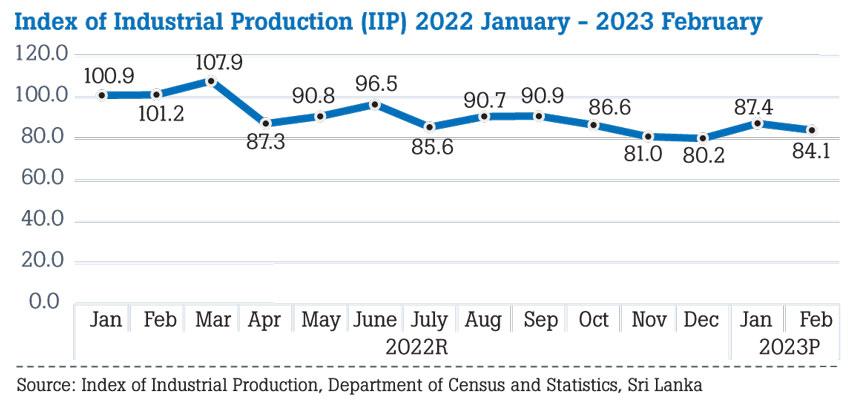20 Apr 2023 - {{hitsCtrl.values.hits}}

Sri Lanka’s industrial activity is still to return to pre-crisis levels, as the demand destruction policies in place at home are continuing to take their toll, while the country’s major export, apparel, is facing a temporary demand slowdown amid monetary tightening and higher inflation in major markets such as the US and Europe.
In February, the Index of Industrial Production, which measures the manufacturing heft of the economy, recoded an index value of 84.1, compared to an index value of 101.2 a year ago, signalling the problems faced by the industrial sector.
The index also slipped 1.6 index points in February to 89.1, from 90.5 index points in January.
However, industrial activity might have picked up pace from March amid the improvement in the foreign exchange conditions and the optimism following Sri Lanka’s successful deal with the International Monetary Fund (IMF) for a US $ 3 billion facility.
This was reflected in the Purchasing Managers’ Index data for March, where the broader manufacturing sector staged an expansion after nine months of decline.
Sri Lanka’s economy was on a rollercoaster ride during the last 12 months, hitting a nadir last year, before starting to rebound from March this year. However, data would not reflect this transformation immediately until the third or may be the fourth quarter of this year.
The sectors, which have the most weightage in the index such as food, beverage, textiles, garments and rubber and plastics products, declined in February over the same period in 2022.
Manufacturing of coke and refined petroleum products edged up 1.5 percent.
This reflects the dampened demand conditions locally and the demand pullback in advanced economies for things like clothing.
Sri Lanka’s exports still remain resilient, albeit apparels have shown some decline in revenues in the recent months.
01 Nov 2024 3 hours ago
01 Nov 2024 3 hours ago
01 Nov 2024 4 hours ago
01 Nov 2024 5 hours ago
01 Nov 2024 5 hours ago